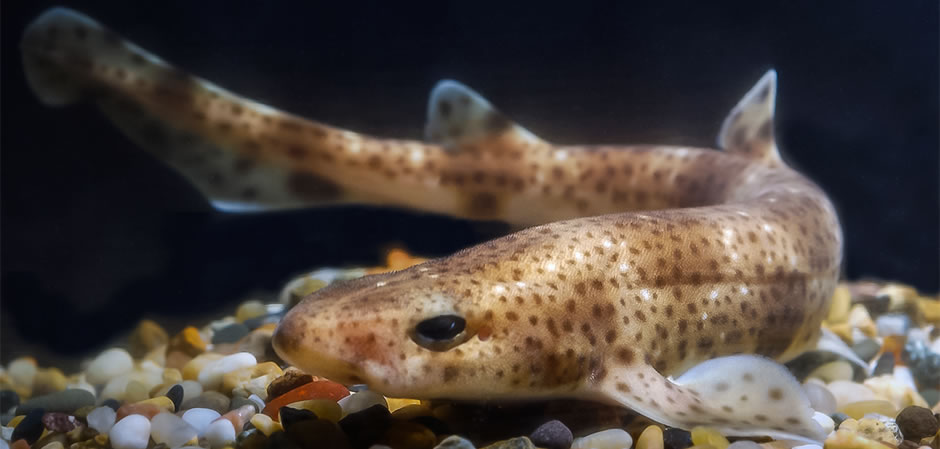Embryonic Development
There are three types of embryonic development: oviparous, ovoviviparous, and viviparous.
In oviparous ("egg birth") sharks, a gland secretes a shell, or case, around the egg as it passes through the oviduct, protecting the shark until it hatches. The mother deposits the egg cases in the sea.
- When the egg case is first laid, it is soft and pale; the case hardens and darkens in a few hours.
- The developing embryo receives nutrients from a yolk formed prior to fertilization.
- Oviparous sharks include horn sharks and swell sharks (Cephaloscyllium ventriosum).
- Port Jackson sharks carry their egg cases in their mouths, possibly to drop them in a hiding spot. This is about the only shark parental care observed by humans.
In ovoviviparous ("egg live birth") sharks, the shell is often just a thin membrane. Sometimes there is more than one egg in the membrane; this group of eggs is called a candle. The mother retains the egg, and the embryo soon sheds the membrane and develops in the mother's uterus.
- Theoretically, all the embryo's nutrients come from the yolk. In some species, however, the lining of the uterus probably secretes nutritive fluids that are absorbed by the embryo.
- In other species, embryos continue to obtain nutrients after their yolk is absorbed by swallowing eggs and smaller embryos in the uterus. This is termed "intrauterine cannibalism" or ovophagy ("egg eating"). In these sharks, usually only one embryo survives in each uterus. (Females have two uteri).
- Ovoviviparous sharks include mako sharks and sand tiger sharks (family Odontaspididae).
In viviparous ("live birth") sharks, the yolk stalk that connects the embryo to the yolk grows long in the uterus. Where the small yolk sac comes in contact with the mother's uterus, it changes into a yolk sac placenta.
- The embryo receives all its nutrients from the mother in one of two ways: Tissues of the embryo and the mother are in intimate contact and nutrients are passed directly from the tissues of the mother to the tissues of the developing embryo. The uterine lining secretes "uterine milk", which bathes the developing embryo. The branched yolk stalk absorbs the fluid.
- Viviparous sharks include hammerhead sharks.
Gestation
Gestation periods vary among species and between individuals within a species. Since sharks and batoids are ectothermic ("cold-blooded"), there is no precise gestation time. The rate at which the embryo develops depends on the water temperature. In general, most embryos develop somewhere in the range of two months (for some rays) to 18 to 24 months for the piked dogfish (perhaps the longest of any vertebrate animal). Some researchers believe basking sharks have a gestation period of three and a half years.
Location
Sharks generally bear their young or lay eggs in coastal nurseries where other large sharks are usually absent.




